Name Maria of | Religion Roman Catholicism | |
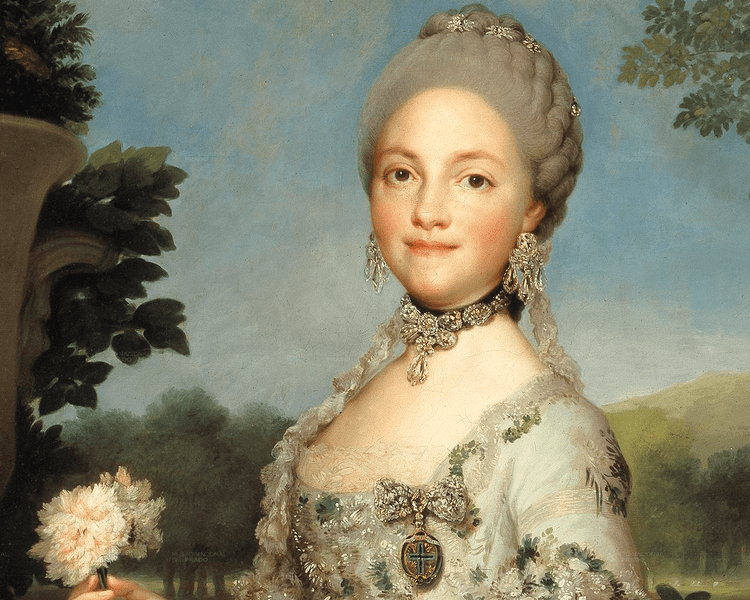 | ||
Tenure 14 December 1788 – 19 March 1808 Born 9 December 1751Parma, Italy ( 1751-12-09 ) IssueDetail Carlota Joaquina, Queen of PortugalInfanta Maria AmaliaMaria Luisa, Queen of EtruriaFerdinand VIICarlos, Count of MolinaMaria Isabel, Queen of the Two SiciliesInfante Francisco de Paula Mother Princess Louise Elisabeth of France Children Ferdinand VII of Spain Parents Philip, Duke of Parma, Louise Elisabeth of France Similar People Charles IV of Spain, Ferdinand VII of Spain, Manuel Godoy, Maria Luisa of Spain - Du, Maria Isabella of Spain | ||
Portrait of Queen Maria Luisa of Parma. Francisco de Goya y Lucientes
Maria Luisa of Parma (9 December 1751 – 2 January 1819) was Queen consort of Spain from 1788 to 1808 by marriage to King Charles IV of Spain. She was the youngest daughter of Philip, Duke of Parma, the fourth son of Philip V of Spain and Princess Louise-Élisabeth of France, the eldest daughter of King Louis XV.
Contents
- Portrait of Queen Maria Luisa of Parma Francisco de Goya y Lucientes
- Early life
- Marriage
- Queen
- Later life
- Legacy
- Issue
- References
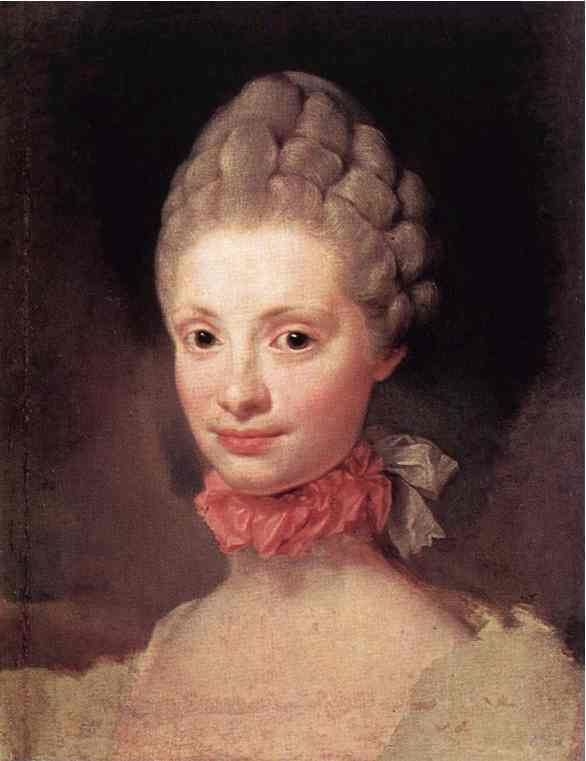
Early life
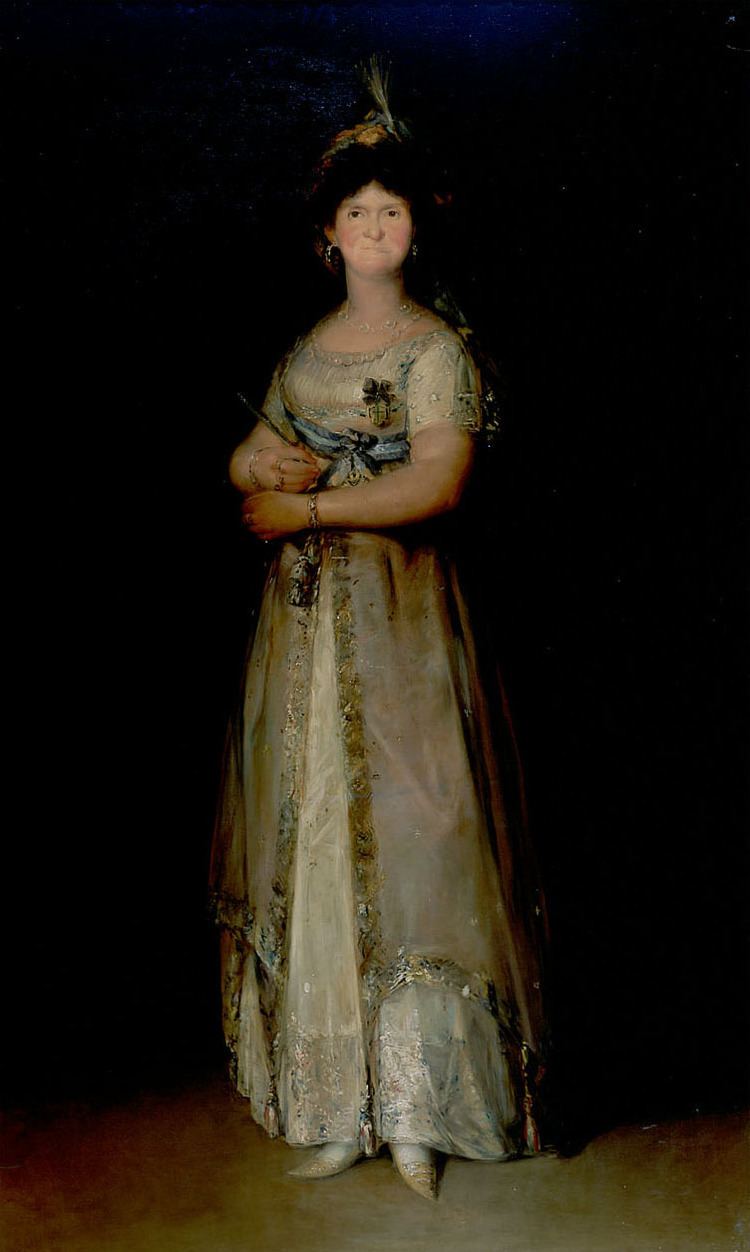
Born in Parma, she was christened Luisa María Teresa Ana, after her maternal grandparents and her mother's favourite sister, Anne Henriette of France, but is known to history by the short Spanish form of this name: María Luisa. Her parents had been the Duke and Duchess of Parma since 1749, when the Treaty of Aix-la-Chapelle (1748) awarded the duchy to the Bourbon.
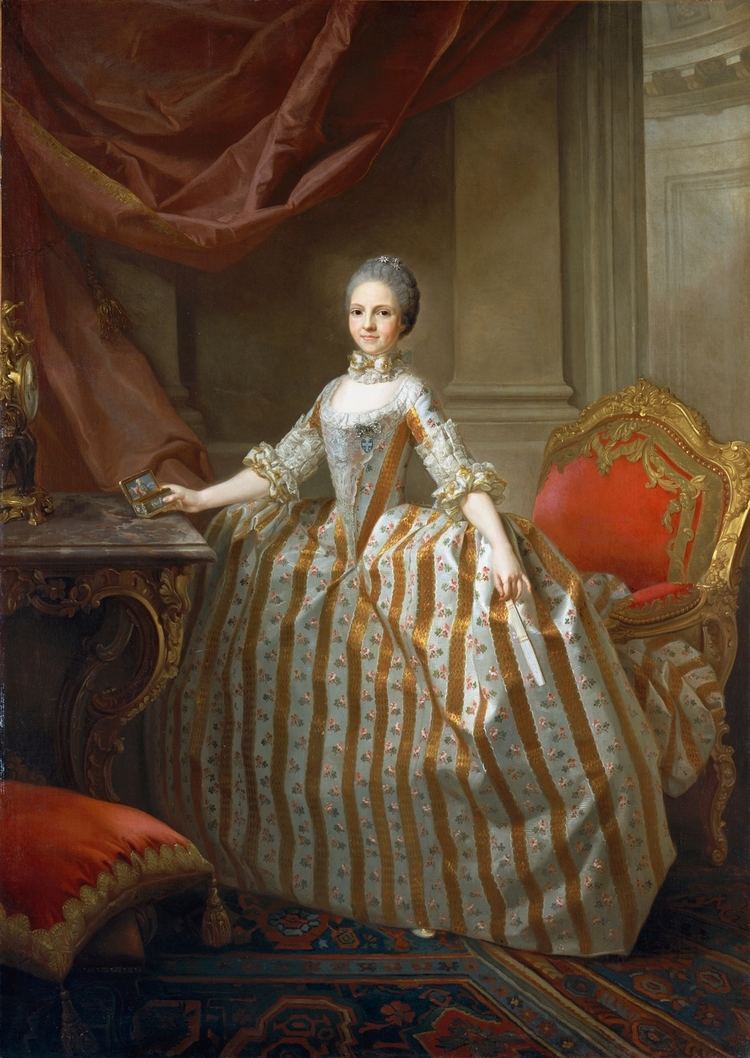
She, her brother Ferdinand, and her sister Isabella were educated in Parma by Étienne Bonnot de Condillac, a well-known French philosopher. Maria Luisa, was not considered as beautiful as her elder sister, but was still attractive, though she was quite short.
Marriage
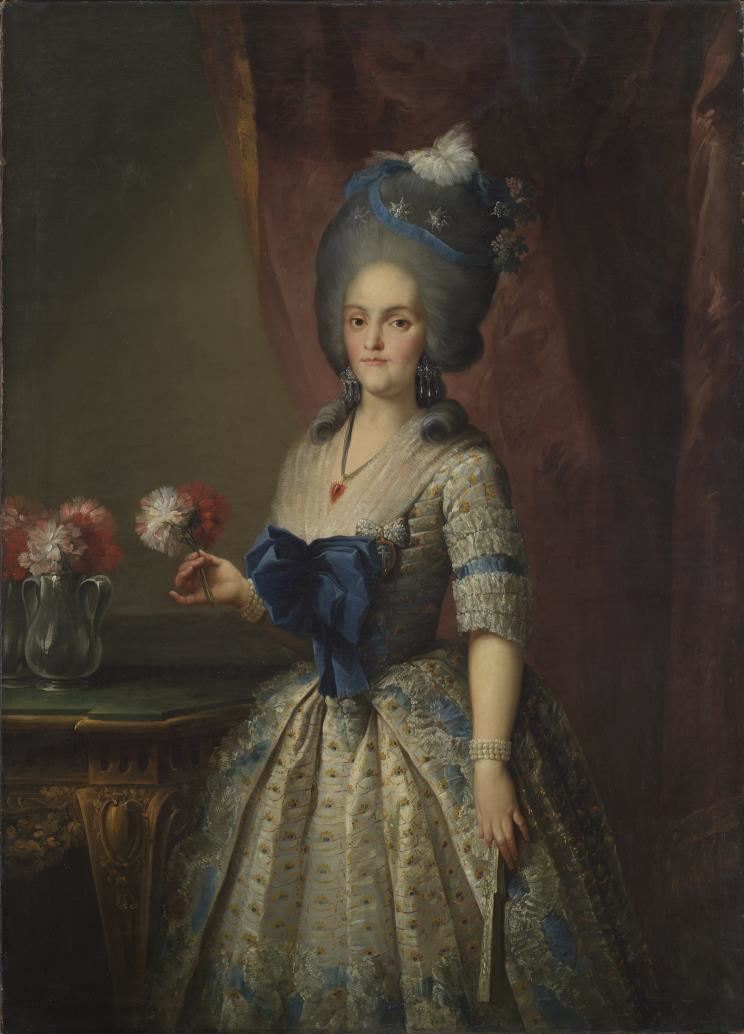
María Luisa's mother tried to engage her to Louis, Duke of Burgundy, heir to the French throne. However, the young duke died in 1761. In 1762, Maria Luisa instead became engaged to her cousin Charles, Prince of Asturias, later King Charles IV of Spain. The wedding took place on 4 September 1765 in La Granja Palace.
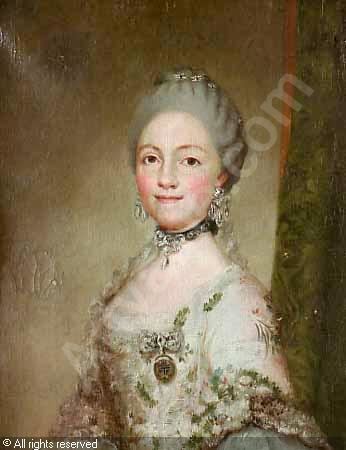
Her husband was the son and heir of the widowed Charles III of Spain, previously Duke of Parma and King of Naples and Sicily. This formally gave her the position of princess of Asturias, or crown princess. However, as there was no queen in Spain at that time, María Luisa became the first lady in precedence at the court from the beginning of her residence there.
Queen
In 1788, her spouse succeeded his father as Charles IV of Spain, making Maria Luisa queen. On the first meeting between Charles IV and his ministers, Maria Luisa was present, a step which attracted attention and which became the rule during the reign of her spouse.
María Luisa was reputed to have had many love affairs. The most famous of them being was with the prime minister Manuel de Godoy, whom contemporary gossip singled out in particular as a long-time lover. However, there is no direct evidence that she had any lovers. The Queen's confessor Fray Juan Almaraz wrote in his last will that she admitted in articulo mortis that "none, none of her sons and daughters, none was of the legitimate marriage". The veracity of that testimony, however, remains disputed.
She was unpopular during her husband's reign, her poor historical reputation being attributed to her support of pro-French political policies that were not deemed beneficial for Spain in the long term.
Later life
In 1808, Charles IV abdicated the throne due to pressure from Napoleon I. Maria Luisa followed him en exile in France and Italy. When Napoleon's army invaded the country, several pamphlets blamed her for the abdication. María Luisa spent some years in France and then in Rome. Both María Luisa and her husband died in Italy in early 1819.
Legacy
In 1792, the Order of Queen Maria Luisa for women was founded on her suggestion.
Issue
Maria Luisa married her first cousin Charles IV, in 1765. The couple had fourteen children, six of whom survived into adulthood:
In addition, Maria Luisa had ten other pregnancies who ended in miscarriages:
